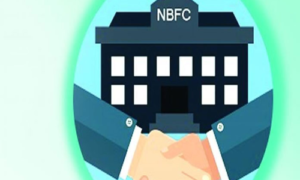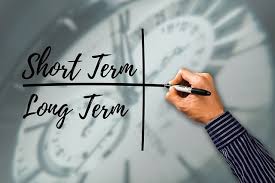Embarking on a journey towards becoming a licensed Mortgage Loan Originator (MLO) in California is an exciting step towards a rewarding career. As a state with one of the most dynamic real estate markets in the U.S., California offers numerous opportunities for those proficient in the art of mortgage lending.
An MLO serves as an essential liaison between potential borrowers and lenders. This guide provides an in-depth roadmap for navigating the MLO licensing process in California. By following these steps and meeting the requisite criteria, you’ll be well-equipped to start a successful career in the mortgage lending industry.
Understanding the MLO License
A Mortgage Loan Originator, or MLO, serves as a vital link between prospective borrowers and lenders. MLOs are professionals who work with borrowers to complete a mortgage transaction, guiding them through the loan process from initial application to closing.
Their responsibilities include gathering client information, completing mortgage loan applications, and staying informed about various loan products and requirements to effectively assist borrowers. Obtaining an MLO license requires an understanding of both federal and state-specific regulations.
The licensing process in California is administered by the California Department of Financial Protection and Innovation. It involves meeting certain educational requirements, passing a licensing exam, completing a background check, and securing sponsorship from a licensed mortgage company.
Education and Exam Requirements
The path to becoming a licensed Mortgage Loan Originator (MLO) in California involves a combination of required education and passing a nationally recognized examination. Here are the key steps and requirements:
Educational Requirements:
- Nationwide Mortgage Licensing System (NMLS) Pre-license Education: As a fundamental step, applicants are required to complete 20 hours of pre-license education mandated by the NMLS. This comprehensive training delves into key topics, including federal lending laws, general mortgage knowledge, and ethical conduct in mortgage lending.
- California-specific Education: California mandates additional state-specific education for MLOs. Applicants need to complete an extra 2 hours of education related to California state law and regulations.
Examination Requirements:
- NMLS National Test with Uniform State Content: Upon successful completion of the pre-license education, the next critical requirement is to pass this examination. It assesses your understanding of the materials and concepts covered during the educational phase.
Exam Preparation:
- Study Materials: Use the study resources provided by your education provider. The NMLS also offers a range of additional study resources that you might find helpful.
- Study Schedule: Develop a consistent study routine, prioritizing comprehension of key concepts over rote memorization.
- Practice Tests: Taking practice tests can be incredibly useful in familiarizing yourself with the test format and types of questions.
Application Process and Background Checks
Once you have successfully completed the required education and passed the NMLS exam, the next step in obtaining your MLO license is submitting an application through the NMLS website. This process includes providing detailed personal information, professional history, and disclosure of any financial or legal issues.
The application process also involves a thorough background check. The Nationwide Mortgage Licensing System (NMLS) requires fingerprinting for all MLO license applicants to conduct an FBI criminal history background check.
Disclosure is another integral part of the application process. Applicants are required to provide comprehensive information about their financial and legal history. Transparency is key during this process; failing to disclose any relevant information could result in delays, additional investigations, or even denial of your license.
It’s important to note that having a criminal record or financial difficulties does not necessarily preclude you from becoming an MLO. The licensing agency will consider the nature and severity of any disclosed issues, as well as how much time has passed since the event, and any evidence of rehabilitation
Through each step of this process, remember to be thorough, honest, and accurate. This stage is a crucial part of obtaining your MLO license and helps ensure that only qualified, trustworthy individuals enter the mortgage lending industry.
Sponsorship and Maintaining Your License
After you have fulfilled the educational, examination, and application requirements, securing employment and sponsorship by a licensed mortgage company is a critical step in the MLO licensing process. This sponsorship serves as a form of endorsement from a recognized mortgage firm, stating that they are willing to take you on and supervise your activities as a licensed MLO.
In practical terms, this means you’ll need to be hired by a mortgage company before you can activate your MLO license. Start building your professional network early and use it to find potential employers in the mortgage industry.
Once you have your MLO license, your journey doesn’t end there. To maintain your MLO license in California, you’re required to fulfill annual continuing education requirements.
License renewal is another important consideration. MLO licenses expire on December 31 each year, regardless of when they were issued. You’ll need to renew your license annually through the NMLS, which typically involves confirming your continuing education completion and paying a renewal fee.
Staying current with changes in the mortgage industry, both at the federal and state level, is also crucial. This will help you provide the best advice and service to your clients, maintain compliance with industry regulations, and ensure the longevity of your career in mortgage lending.
Conclusion
Navigating the process to obtain your MLO license in California is a significant but rewarding journey, opening the door to a fulfilling career in the mortgage lending industry. While the process may seem complex, breaking it down into manageable steps – education, examination, application, employment and sponsorship, and license maintenance – makes it far more approachable.
Your journey towards becoming an MLO in California is a testament to your commitment to a profession that makes a real difference in people’s lives. As you navigate this path, remember to stay informed, stay committed, and leverage the resources available to you. Good luck with your MLO licensing journey!





Be First to Comment